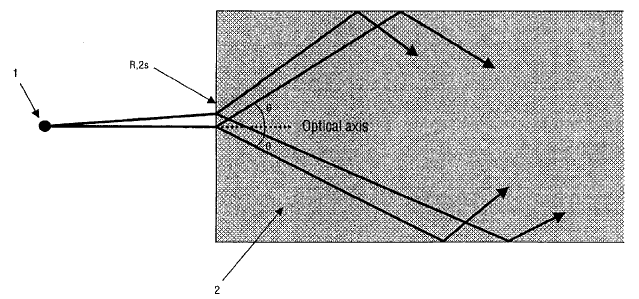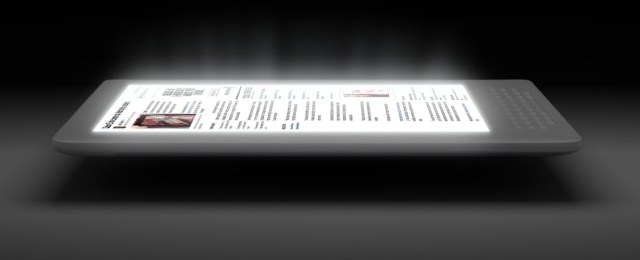Living in Seattle, you tend to find yourself in the company of tech people all the time. With Microsoft, Amazon, Adobe, Google, and a dozen other major companies established in the area, it’s never a surprise when you find out the guy next to you at the bar is working on Windows Phone 8 or Half-Life 3. This week, I was lucky enough to get a chance to see what Amazon has cooking for its next generation of e-readers. Their new offices and the mysterious Lab 126 are just down the street, after all, so I’m actually surprised it hasn’t happened before now.
Back in November, I speculated that the new Kindles and Nooks and what have yous might have glowing screens, the likes of which we’ve seen occasionally but were never fully implemented. It turns out Amazon was thinking the same thing, and actually bought a company that was, I am told, the world leader in light-guide technology. They’ve finally gotten it to the point where it’s ready to be released, and a new generation of glowing Kindles will be coming our way sometime this year.
Incidentally, that acquisition doesn’t appear to have ever been reported, so although it happened in late 2010, this is the first anyone has heard of it. The company, Oy Modilis, was founded in 1991 in Helsinki, and has a number of patents relating to this sort of thing. This one, for instance, seems to cover the type of lighting technology used in the new Kindle.

The device I saw was crudely camouflaged in a sort of cardboard enclosure, but the screen was clearly visible. With a tap, a slider popped up on the screen, and as it was dragged to the right, the screen lit up evenly with a rather cool light. In the dark, it was plainly noticeable as a glow, and in uneven light — say, shade or a shuttered room — the slight illumination made the screen much more readable. At full blast it was definitely projecting some light (technically speaking it was reflecting it), but it was still a soft glow and not the harsh flashlight of a backlit LCD.
I commented on the temperature of the light — it was that blue-white glow found in uncorrected white LEDs, not the warm light on off-white that most people associate with books by lamplight. But, of course, the e-ink screen is in fact grey and dark grey, not black on off-white, as paper is, so a cooler light may actually work better. At any rate, they are apparently sensitive to these issues and looking into it. I thought that the text looked better as well, but it’s possible that this was the result of improved font rendering and aliasing reduction, or perhaps something to do with the light. At any rate, it wasn’t any of the crazy new bistable displays we’ve been seeing at trade shows (alas).
As for the shape of the device, it was impossible to tell, wrapped as it was in its little cardboard box. But the size appears the same, and the whole point of purchasing the light-guide company was to get the team and their patents, which essentially laminate the light diffusion layer right onto the screen without adding much in the way of depth or interfering with the touch system. I was told the industrial design isn’t finished yet, but I ruled out things like ruggedness, waterproofing, or a flush-front screen — all things, by the way, I suggested they look into. It shouldn’t be any thicker, though it will have to accommodate the LED circuitry and presumably a larger battery.
The current crop of e-readers is, as I recently lamented, both troublingly homogenous and still not good enough for paper-lovers like myself. The new Kindle doesn’t look like it’s going to address all of my issues with this kind of device, but the improved display will definitely set it apart from its rivals. We’ll know for sure when it comes out later this year.
[note: the top image is a concept image from Flex Lighting, not a real device]
